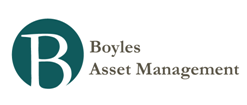Gundlach: Treasuries will Rally When QE2 Ends - By Robert Huebscher
The bonds that PIMCO’s Bill Gross sold to take a 3% short position in the Treasury market may have found a buyer in Doubleline’s Jeffrey Gundlach. In a conference call with investors last week, Gundlach said that Treasury prices would rise in the near term, once QE2 expires on June 30.
For over a year, Gundlach has forecast a “long-term bottoming process” in government bond yields. Last week he said he remains committed to that outlook.
If you are a buy-and-hold investor with a 10-year horizon, Gundlach said, you should position your portfolio with the expectation of inflation. But he doesn’t expect inflation to unfold any time soon. “I am not in the camp that believes Treasury rates are about to rocket higher because of the end of QE2,” he said. “I think just the opposite, actually.”
…..
QE1 was announced (the first red arrow on the left) amid and because of a global banking panic, Gundlach said. The result was a continued decline in rates that ended in December of 2008.
When the purchases actually began, though, bond yields started to rise. That was counterintuitive, Gundlach said, because government’s buying actions should have pushed prices up and yields down. His explanation was that bond investors get nervous when there is a strong inflationary-biased policy. While government buying supported the prices of newly issued securities, investors holding the other $8 trillion of Treasury bonds were unsettled and pushed yields on the 10-year from 2% to 4%.
When QE1 was extended, yields rose even further.
On March 31, 2010, purchases from QE1 ended and bond yields collapsed. Gundlach said this was probably because the stimulus that quantitative easing represented was withdrawn, and that hurt the economy. The withdrawal of QE1 may have also made bond investors feel better that inflationary policies were no longer being pursued.
“The implementation of quantitative easing has produced exactly the opposite market behavior that some people intuitively expected,” he said.
When QE2 was announced, yields bottomed, and when bond purchases began, yields rose.
“The idea that ending QE2 would necessarily mean a rate rise flies in the face of the bloodless verdict of the market,” he said, “which is that when quantitative easing was in place, bond yields rose, and when it was taken off it led to weaker economy and rates falling. I think that is going to happen again.”
Gundlach also said that the start of QE1 triggered a rally in equities, and that rally was amplified when QE1 was extended. When QE1 ended, stocks fell. Stocks rallied again when Bernanke made his speech in Jackson Hole announcing QE2 and rallied again when the buying program began. Gundlach said he expects that pattern to repeat, and that stocks will go down when QE2 ends. “The discounting for that should be starting in the relatively near term,” he said.
- Hoisington Q2 2013 Letter
The secular low in bond yields has yet to be recorded. This assessment for a continuing pattern of lower yields in the quarters ahead is clearly a minority view, as the recent selling of all types of bond products attest. The rise in long term yields...
- Jeffrey Gundlach On Bloomberg (video)
May 17 (Bloomberg) -- Jeffrey Gundlach, founder and chief executive officer of DoubleLine Capital LP, discusses bond markets, the impact of Europe's debt crisis on mortgages and the ways his family shaped his interest in mathematics. Gundlach, speaking...
- Gundlach - Two Dangers For Equity Markets
Don’t buy stocks – for real, this time. That was the message Jeffrey Gundlach delivered to investors last Tuesday. Among riskier asset classes, only equities have performed well since February 14, the date of Gundlach’s previous remarks to investors,...
- Gundlach: The Two Questions That Matter Most
Two questions stand out amid the complexity of the current economic and market environment, according to Jeffrey Gundlach, both of which relate to critical elements of fiscal and monetary policy and should guide portfolio construction for investors. Gundlach,...
- Gundlach Steers Clear Of Mortgage Reits
Investors should avoid real estate investment trusts that buy U.S. mortgage-backed securities because they’ll continue to cut dividends as homeowners refinance mortgages at lower rates, said DoubleLine Capital LP’s Jeffrey Gundlach. “I expect further...

